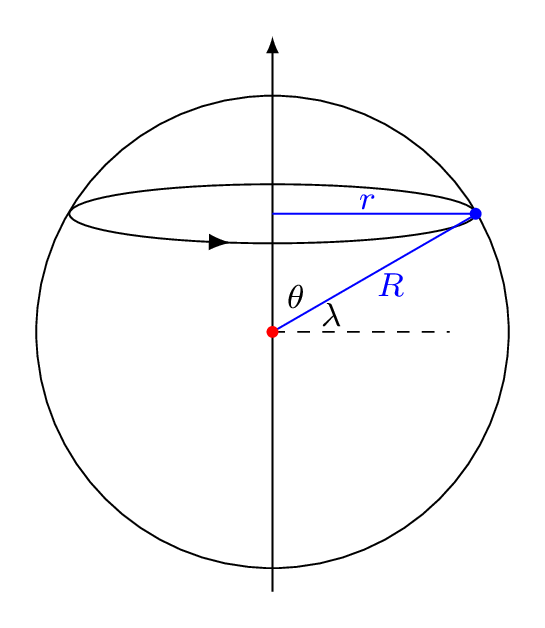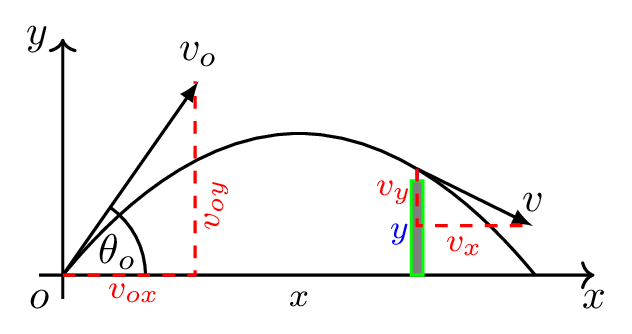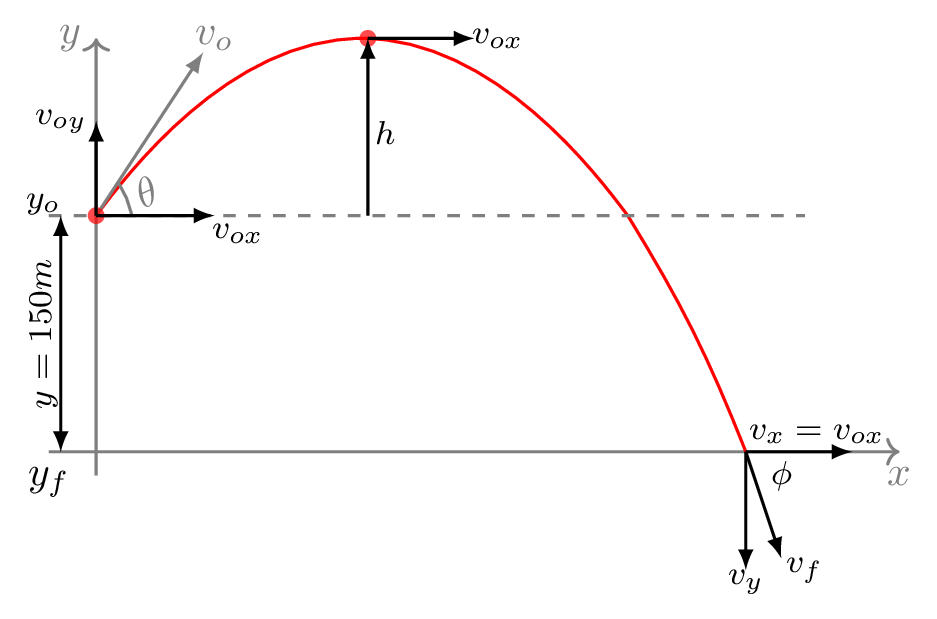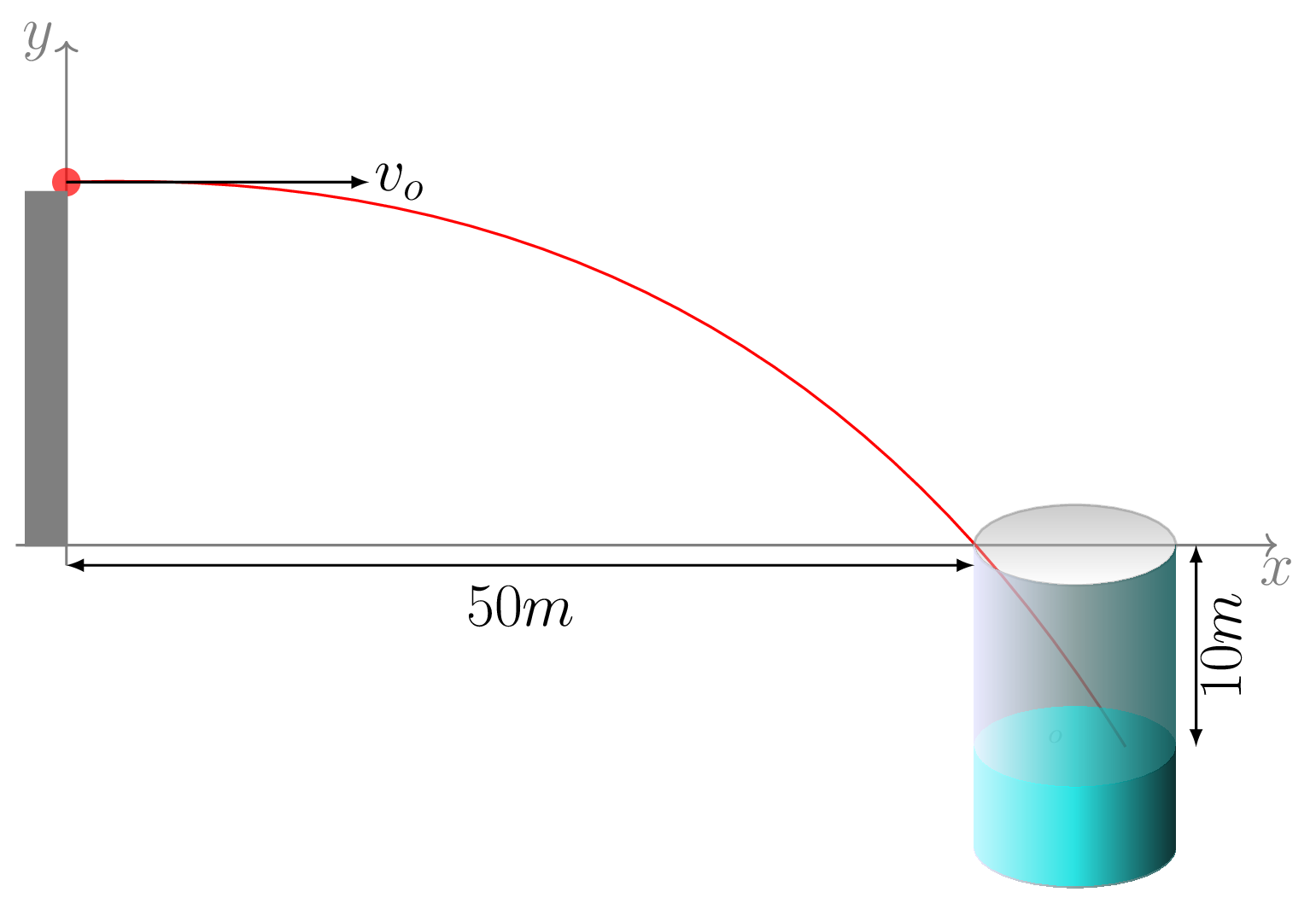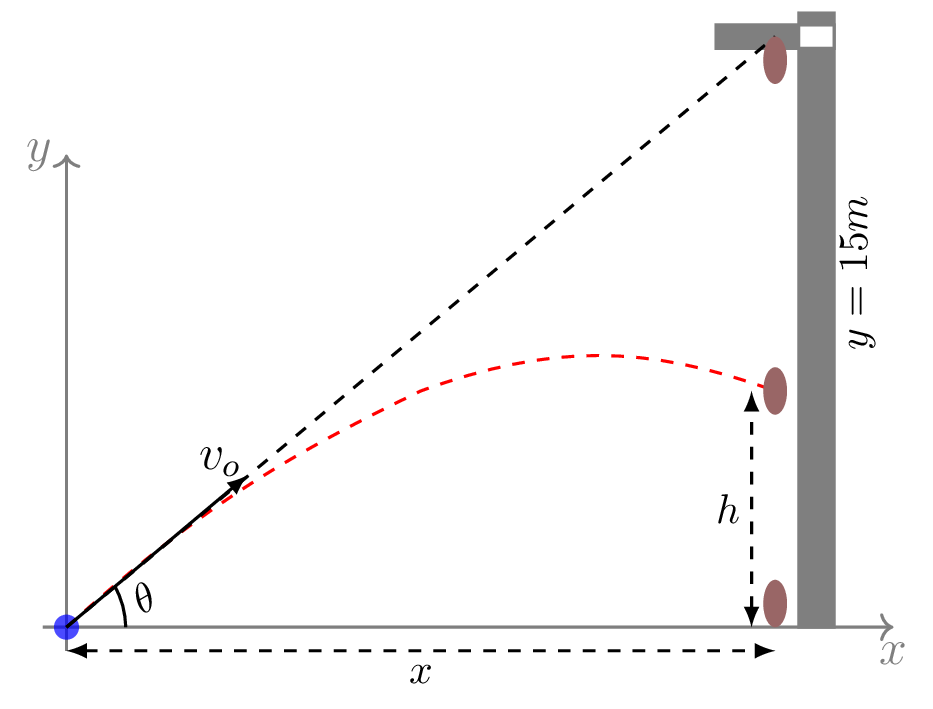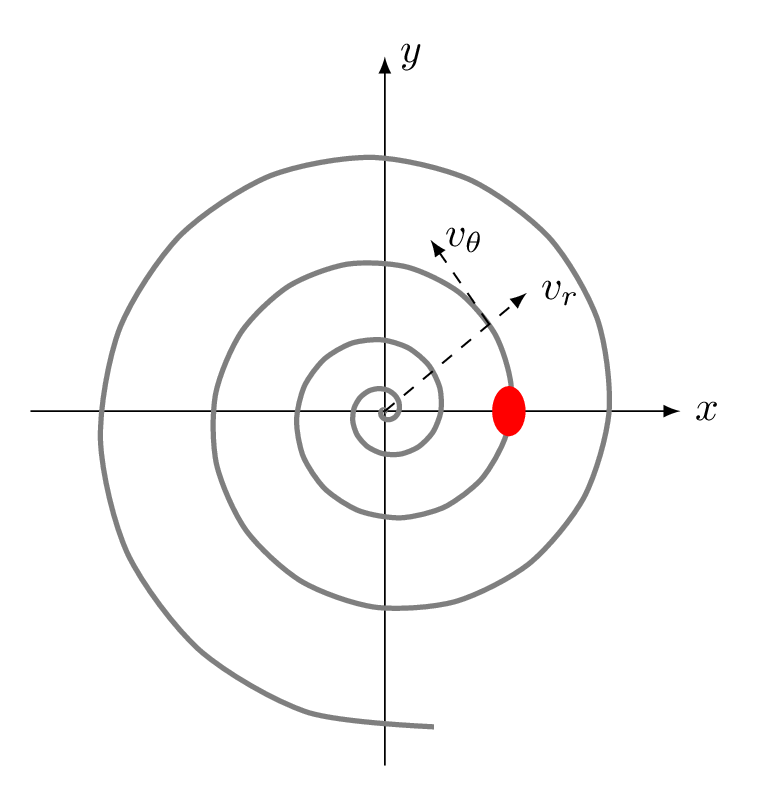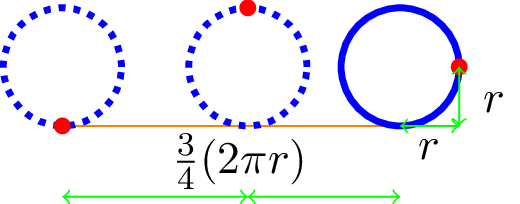Example 3.4.1.
A particle is moving according to the equation
\begin{equation*}
\vec{r}=\left(At^{3}+Bt^{2}\right)\hat{i}+Ct\hat{j}
\end{equation*}
where \(A= 3m/s^{2} \text{,}\) \(B= 2 m/s^{2}\text{,}\) and \(C= -1m/s\text{.}\) Find
- \(\vec{r}(0)\text{,}\)
- \(\vec{r}(2s)\text{,}\)
- \(v_{avg}(0,2s)\text{,}\)
- \(\vec{v}(-1s)\text{,}\)
- \(\vec{v}(3s)\text{,}\)
- \(a_{avg}(-1s,3s)\text{,}\) and
- \(\vec{a}(0.5s)\text{.}\)
Solution.
\begin{equation*}
\vec{r}=\left(At^{3}+Bt^{2}\right)\hat{i}+Ct\hat{j}
\end{equation*}
- \(\vec{r}(0) = 0\text{,}\)
- \begin{align*} \vec{r}(2s)\amp = \left(A\cdot 2^{3}+B \cdot 2^{2}\right)\hat{i}+C\cdot 2\hat{j}\\ \amp = \left(3\cdot 2^{3}+2 \cdot 2^{2}\right)\hat{i}-1\cdot 2\hat{j} \\ \amp = 32\hat{i}-2\hat{j}. \end{align*}
- \begin{align*} v_{avg}(0,2s) \amp = \frac{\vec{r}(2s)-\vec{r}(0)}{2-0}\\ \amp = \frac{32\hat{i}-2\hat{j}-0}{2}\\ \amp =16\hat{i}-\hat{j} \end{align*}
- \begin{align*} \vec{v}(-1s) \amp = \frac{\,d\vec{r}}{\,dt} \\ \amp = \left(3At^{2}+2Bt\right)\hat{i}+C\hat{j} \\ \amp = \left[3.3.(-1)^{2}+2.2.(-1)\right]\hat{i}+(-1)\hat{j} \\ \amp = 5\hat{i}-\hat{j} \end{align*}
- \begin{align*} \vec{v}(3s) \amp = \left(3At^{2}+2Bt\right)\hat{i}+C\hat{j} \\ \amp = \left[3.3.(3)^{2}+2.2.(3)\right]\hat{i}+(3)\hat{j} \\ \amp = 93\hat{i}-\hat{j} \end{align*}
- \begin{align*} a_{avg}(-1s,3s) \amp = \frac{v(3s)-v(-1s)}{3-(-1)} \\ \amp = \frac{93\hat{i}-\hat{j}-5\hat{i}+\hat{j}}{4} \\ \amp = 22\hat{i} \end{align*}and
- \begin{align*} \vec{a}(0.5s)\amp = \frac{\,dv}{\,dt} \\ \amp = \left(6At+2B\right)\hat{i} \\ \amp = [6.3.(0.5) +2.2]\hat{i} \\ \amp =13\hat{i} \end{align*}
